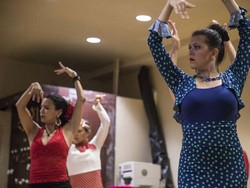Hettie Williams, Ph.D., Assistant Professor in African American History, discussed the Jersey Shore’s ties to black history on the Eyes On The Jersey Shore radio show on Friday, Feb. 12.
“I think one story that everyone should know about, but they likely do not, is the story of Dr. Walter McAfee,” Williams said.
McAfee was a scientist and mathematician who worked out of Camp Evans. He was one of the hidden figures of science. The scientist worked on Project Diana, a precursor to the space age, Williams explained.
Not originally a New Jersey native, McAfee worked in the Garden State among a group of scientists referred to as the “Black Brain Trust.” He went on later to teach at Monmouth University.
“He was one of the few African Americans who was able to secure a degree,” Williams said. “He had a doctoral degree from Cornell University that he earned in 1949. What is significant about McAfee and the black scientists who worked with him is they actually started the space program. We tend to think of the 1950s and the 1960s ‘Race to The Moon,’ and it actually began right here on the Jersey Shore with black scientists like McAfee.”
McAfee and his peers are known for the “moon bounce,” a development breakthrough of bouncing signals off the moon that ushered in the space age.
Williams’ research is centered around the Civil Rights Movement in New Jersey, making the argument that the movement’s roots can be found in the state.
“Asbury Park was known to have one of the more active chapters of the NAACP,” Williams said. “One of the scientists who worked at Camp Evans had a cross burning on his yard in the mid-1940s. He got on the phone and called the Asbury Park NAACP. It was about 27 members of the Asbury Park NAACP who got in their cars; they were armed when they came to this scientist’s home to protect him.”
The story was written in the New York Times and appeared in the Asbury Park Press, Williams explained. “This ties into the larger Civil Rights Movement because there’s a big debate among historians how the Civil Rights Movement was fought with non-violent, direct action. That was a part of how it was fought, but members of the NAACP also carried arms.”
During a movement named the Harlem Renaissance that occurred during the jazz age, many of the artists of the era and beyond were living in New Jersey, Williams said.
“Well known arguments are now being made about the music culture in New Jersey and how [the state’s] artists have made a contribution from the era of the Harlem Renaissance, down to the present,” Williams said. “We have a long history of making contributions to American music culture but also, again, Civil Rights.”
One of the important stories that everyone should know, according to Williams, is that the Civil Rights Movement is referred to as the struggle for Black equality.
“It’s a struggle that continues down to the present with the Black Lives Matter movement,” Williams said. “Folks should realize that there is a larger continuum of history. It’s not something new. There’s always been struggles for black equality and that’s just the most recent iteration of it.”
Williams considers there to have been progress made since the struggle for Black equality began, but at the same time, there have been setbacks in history and in those areas of progress.
“For instance, the acceptance of African American culture, including music culture,” Williams said. “You could argue there’s been a greater level of integration when it comes to Black culture as opposed to social and economic integration. When we think about integration of African Americans into American society, as a whole we want to think about these different sectors of society: culture, economics, social integration and those various sectors in society.”
PHOTO COURTESY of Anthony DePrimo


